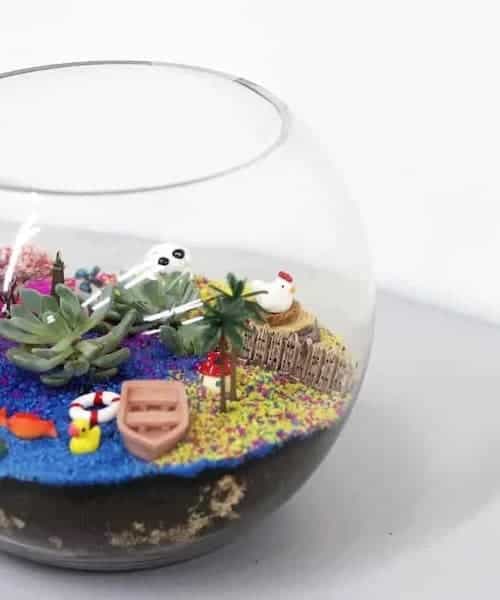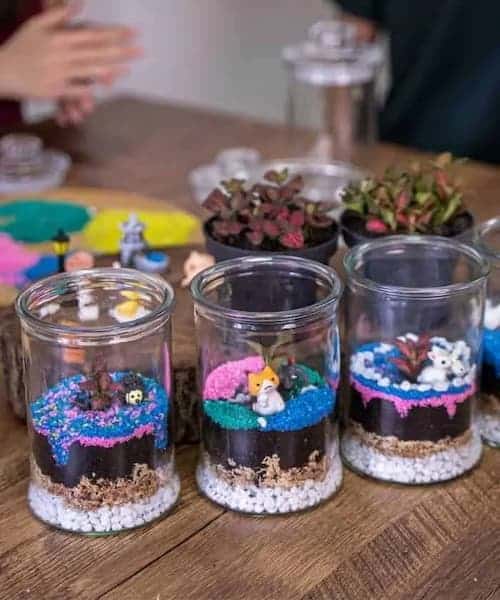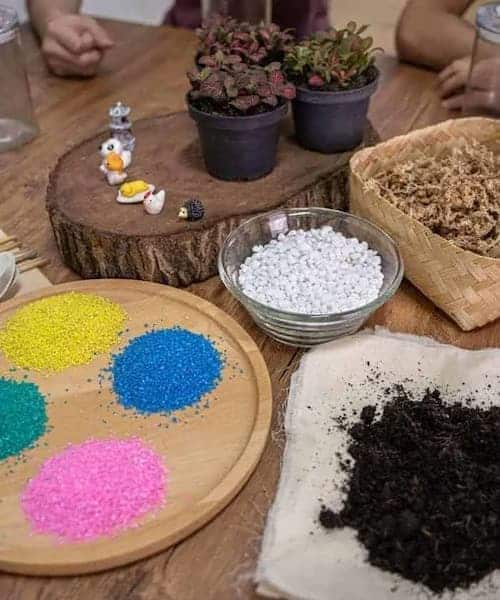Terrarium

Do you love plants and spending time outdoors? If so, you will love terrariums! Terrarium Singapore is a great way to enjoy plants indoors and can be customized to fit any space. In this comprehensive guide, we will discuss everything you need to know about terrariums. We will cover everything from what is terrarium to different types of terrariums. So whether you are a beginner or an experienced gardener, read on this guide before trying out DIY terrarium Singapore!
What is terrarium?

Terrariums, also known as glass aquariums, are glass containers, tanks, or cages that are used for decoration or testing of simulated habitat conditions with soil, gravel, water, plants, and perhaps outside animals. The term Terarium originates from the Latin word terra, which means "gravel soil."
As a result, even those who do not practice bonsai are intrigued by these fascinating creatures. Although it is getting more common in Singapore, few people are aware of what it is. It appears that it is not only a few beautiful plants, such as ferns, cacti, or succulents, placed together in an empty glass vase. In the West this is considered an art, or the Bonsai art of the East.
The development of the art of terrarium

The ancient Greeks used bell-shaped glass jars to grow plants, which is when this artwork first emerged. It was not until the 19th century that an English doctor named Nathaniel Bagshaw Ward elevated it to a fine art.
Nathanie Ward has cultivated plants and miniatures in her backyard, but because of the smoke from the factories, some plants do not thrive. To limit harmful gases, he developed growing them in glass containers. He carried on developing plants in tiny greenhouses that eventually became known as Wardian cases or Terrariums.
Types of terrarium

Terrariums are classified according to their shape, size, composition, material, water content, temperature, purpose, flora and fauna of the animals inside them (as well as habitat description).
Closed terrariums
Depending on the plants you select for your terrarium, you can be certain that they will not be harmed by being kept inside. The transparent glass wall allows light to enter, promoting photosynthesis in plants.
Because the glass walls are transparent, allowing light to penetrate, trapping heat inside, and causing a tiny water cycle, closed terrariums frequently provide a distinct habitat for plant development.
The moisture from the gravel soil evaporates, and the plants transpire, causing water vapor to condense on the glass walls. The water vapor condenses on the glass walls and falls back onto the gravel and plants, creating an ideal enclosed environment for growing plants. You won't worry about the flowers drying out because you'll have continuous water.
Open terrariums
A closed terrarium is better for plants that thrive in dry conditions, such as succulents and cacti. This is the most common type because the maintenance system is not too demanding, just be careful not to allow the humidity level get too high, as this may cause waterlogging.
Terrarium
Terrarium making Singapore is really a delicate art for those who love growing plants. Having a lot of contact with nature will make us always feel in love with life and in a very comfortable mood. If you're interested in learning how to make a terrarium, don't hesitate to check out terrarium diy kit Singapore or terrarium class Singapore. In case you need guidance, The Fun Empire terrarium workshop is an amazing terrarium course that will help you approach this art form more easily!
If you enjoyed reading this blog, you might also like:
